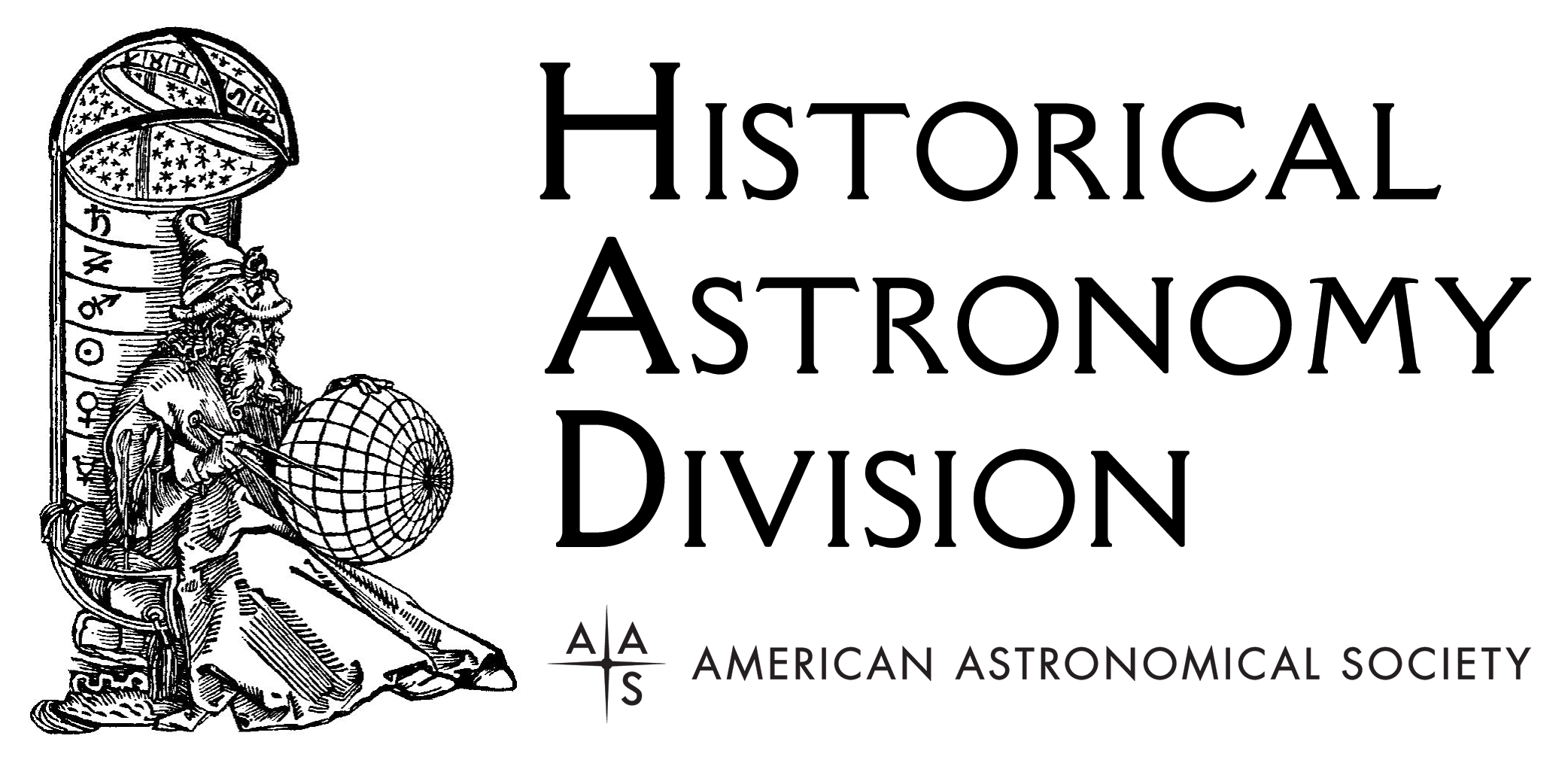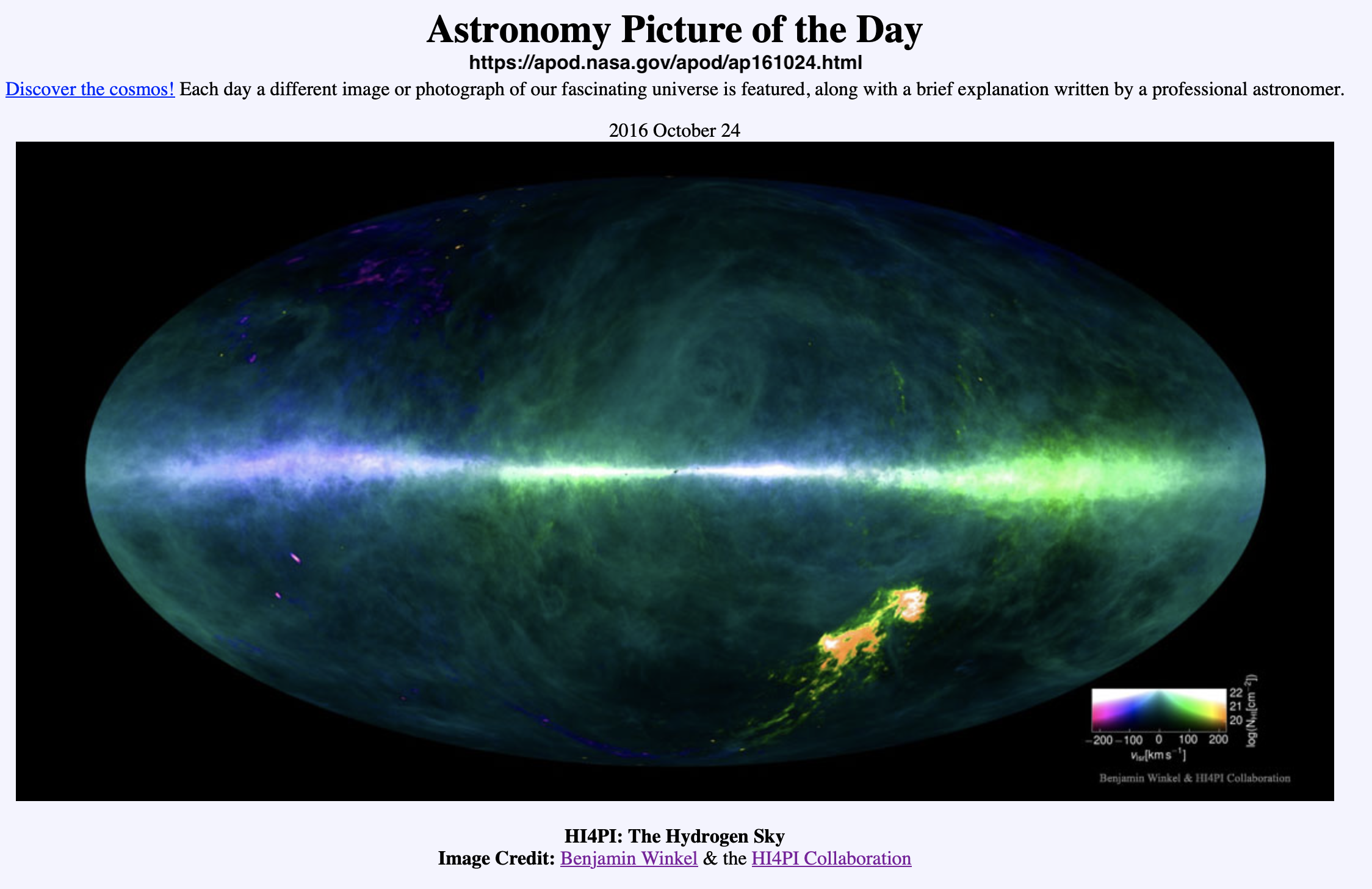This Month in Astronomical History: March 2024
Michael Marotta American Astronomical Society (Amateur Affiliate)
 Each month as part of this series from the AAS Historical Astronomy Division (HAD), an important discovery or memorable event in the history of astronomy will be highlighted. This month, Michael E. Marotta writes about the discovery of the 21-cm emissions of interstellar hydrogen. Interested in writing a short (500-word) column? Instructions along with previous history columns are available on the HAD web page.
Each month as part of this series from the AAS Historical Astronomy Division (HAD), an important discovery or memorable event in the history of astronomy will be highlighted. This month, Michael E. Marotta writes about the discovery of the 21-cm emissions of interstellar hydrogen. Interested in writing a short (500-word) column? Instructions along with previous history columns are available on the HAD web page.
Listening to the Universe at 21 Centimeters
On 25 March 1951, Edward Purcell and Harold Ewen discovered the 21-cm radio radiation from cold hydrogen in the galaxy.1 In the words of James Stanley Hey, who discovered that the Sun emits radio waves and who identified the first extragalactic radio source in Cygnus A. “The prediction of the 21 cm line radiation from neutral atomic hydrogen and its subsequent detection in 1951 was an achievement in the elegant classical manner one always imagines the course of research ought to follow.”2 Today, exploration and discovery on the 21-cm band continue and the wavelength is actively pursued as the likely carrier for a transmission from an extra-terrestrial intelligence.3,4,5,6
The existence of the 21-cm emission was predicted in a paper by Hendrik C. van de Hulst, published in 1945 while he was working toward his baccalaureate at Utrecht where Jan Oort was teaching.7 Van de Hulst’s lead paragraph indirectly pointed to the discovery of extra-terrestrial radio waves by Karl G. Jansky of Bell Telephone Laboratories in 1932. “Although the existence of radio waves of extraterrestrial origin has already been known for a decade, astronomers have not yet paid much attention to them. This is partly due to the crude data thus far furnished by the observations; not much has been established other than the order of magnitude of the intensity and the rough directional dependence of the radiation. Thus, little can be expected from a detailed discussion of the observational facts.”
World War II interrupted all sciences; physicists in particular were drafted to work on electronic projects such as radio detection and ranging (radar). Even more to the point, perhaps, Jansky’s first three papers, delivered at annual conventions of radio engineers in 1932, 1935, and 1938 were widely ignored. First, he was cautioned by his supervisors at Bell Labs not to make extravagant claims outside the requirements of radio communication as it was practiced in the 1920s because longwave radio dominated and shortwave was considered not useful.2,8 Long waves refract around the curve of the Earth. However, shortwaves can be bounced off the ionosphere (now called the Kennelly-Heaviside layer) but that fact was not put to immediate use, although Guglielmo Marconi won a contract with the British General Post Office to link the empire by telegraph using short waves in 1927. The “dit-dah-dit” of telegraphy allows easier transmission and error correction than does voice, which was the primary interest of the Bell Telephone Laboratories. The biggest problem for them was electrical noise from thunderstorms. And, Jansky did not have much more data than order-of-magnitude detections of signal strength and direction. That general direction pointed to the center of the galaxy.2,8
Hendrik van de Hulst’s theoretical developments of the quantum mechanics of hydrogen atoms in interstellar space depended on the assumption that hydrogen is abundant. Cecilia Payne-Gaposchkin first asserted that fact in her doctoral dissertation (1925), although her advisor required her to deny the validity of her findings. Her work was vindicated by Henry Norris Russel in 1929.9 Our 100-year-old exploration into the relative densities of hydrogen atoms and molecules within and between interstellar “clouds” continues to evolve. It has long been accepted that when hydrogen atoms collide (as they inevitably must) they gain energy which they eventually must lose. The phenomenon of transition to a lower energy state is characterized by the emission of a photon with a wavelength of 21.1 cm and a frequency of 1.42 GHz.
In 1951, Frank John Kerr was working on his master’s degree at Harvard, courtesy of a Fulbright grant. He wrote: “I happened to be there on the famous day (March 25, 1951) when H. I. “Doc” Ewen and E. M. Purcell first detected the 21-cm line from neutral hydrogen in interstellar material in the Galaxy. H. C. van de Hulst, one of the pioneering Dutch radio astronomers, was also by chance at Harvard at that time. Purcell called us all together on the morning after the overnight discovery. Cautious physicist that he was, he wanted to see confirmation of the detection before publishing the result. He suggested that van de Hulst and I should cable our respective institutions in Holland and Australia to report the discovery and ask whether confirmation would be possible.”9 In the best tradition of science, Ewen and Purcell delayed their publication until the other two teams could add their works, and all three notices appeared in the same issue of Nature.1,10,11
From then on, radio astronomy extended and expanded observation and discovery beyond the narrow visible spectrum from the longest radio waves to the shortest gamma rays. The advantage to the radio portion of the electromagnetic spectrum is that those frequencies from 3 Hz to 3000 GHz (100,000 km to 0.1 mm) penetrate the Earth’s atmosphere, allowing ground-based sensing. Unfortunately, the “voice of the universe” at the 21-cm wavelength is also in the commercial UHF range from 100 cm to 10 cm which is shared by police, fire, emergency medical services, and Bluetooth, among others. The attendant noise of civilization notwithstanding, advances in radio astronomy came quickly and continued to attract researchers, providing a torrent of new information about the cosmos.
Cosmos was the title of Carl Sagan’s 1980-1981 television series. It closed with three episodes on the problems of communication by intelligent beings across interstellar space: “The Persistence of Memory;” “Encyclopedia Galactica;” and “Who Speaks for Earth?” Sagan was an active advocate for the search for extraterrestrial intelligence (SETI). His 1966 book, Intelligent Life in the Universe, credited Iosef Shklovskii as a coauthor. Shklovskii was one of the early pioneers in radio astronomy.12 Shklovskii was aware of the potential for using the 21-cm wavelength for communication by civilizations across interstellar distances.13 However, the two never met in person and never discussed this work before its publication.14
Since that night when Purcell and Ewen stuck a horn antenna out of a window in the physics building at Harvard, thousands of papers have been published about discoveries from recording the 21-cm band. Of over 2,300 papers since 1952, more than 1,300 appeared since 2010. It seems to be a very broad carrier for intelligent communication.

Fig. 1: The Earth's atmosphere stops most types of electromagnetic radiation from space from reaching Earth's surface. This illustration shows how far into the atmosphere different parts of the EM spectrum can go before being absorbed. Only portions of radio and visible light reach the surface. (Credit: STScI/JHU/NASA)

Fig. 2: HI4PI: The Hydrogen Sky. Image Credit: Benjamin Winkel & the HI4PI Collaboration. This was a NASA Astronomy Picture of the Day selection for 24 October 2016. “Explanation: Where are the Milky Way's gas clouds and where are they going? To help answer this question, a new highest-resolution map of the sky in the universe's most abundant gas — hydrogen — has been completed and recently released, along with its underlying data. Featured above, the all-sky map of hydrogen's 21-cm emission shows abundance with brightness and speed with color. Low radial speeds toward us artificially colored blue and low radial speeds away colored green. The band across the middle is the plane of our Milky Way Galaxy, while the bright spots on the lower right are the neighboring Magellanic Clouds. [“H1 gas that is ripped out of the Large and Small Magellanic Clouds by tidal forces.”—BW] The HI4PI map collects data from over one million observations with the northern Effelsberg 100-Meter Radio Telescope in Germany and the southern Parkes 64-Meter Radio Telescope in Australia, also known as "The Dish". The details of the map not only better inform humanity about star formation and interstellar gas in our Milky Way galaxy, but also how much light this local gas is likely to absorb when observing the outside universe. Many details on the map are not yet well understood.” (https://apod.nasa.gov/apod/ap161024.html)
References
- Ewen, H. I., and Purcell, E.M. (1951). “Observation of a Line in the Galactic Radio Spectrum,” Nature. 168, 356-358.
- Hey, J. S. (1973). The Evolution of Radio Astronomy. Science History Publications; Neale Watson Academic Publications, Inc. page 51.
- Hassan, Sultan, et al. (2023). “JWST Constraints on the UV Luminosity Density at Cosmic Dawn: Implications for 21 cm Cosmology,” The Astrophysical Journal Letters, 958:L3 (6pp), 2023 November 20.
- Lewis, Joseph S. W., et al. (2024). “The Signature of Galaxy Formation Models in the Power Spectrum of the Hydrogen 21 cm Line During Reionization,” Monthly Notices of the Royal Astronomical Society, 528, 3592–3612 ( 2023 December 19)
- Shostak, Seth. (2021). A Primer on SETI at the SETI Institute. https://www.seti.org/primer-seti-seti-institute (Accessed 4 February 2024.)
- n.a. (n.d.) “SETI Observations” https://www.seti.org/seti-institute/project/details/seti-observations (Accessed 4 February 2024.)
- Van de Hulst, H. C. (1945). “Origins of the Radio Waves from Space,” Nederlandisch Tijdschrift voor Naturkunde 11, 210 (December 1945), reprinted as translated by Woodruff Turner Sullivan in Classics in Radio Astronomy, D. Reidel Publishing Company. Dordrecht, Boston, London.
- Kerr, F. J. (1984). “Early Days of Radio and Radar Astronomy in Australia,” in The Early Days of Radio Astronomy: Reflections Fifty Years After Jansky’s Discovery, W. T. Sullivan, editor. Cambridge University Press.
- Spears, Stephen. (2022). “The First Lady of Harvard’s Observatory Hill: Cecilia Payne-Goposchkin.” This Month in Astronomical History: April 2022. https://aas.org/posts/news/2022/04/month-astronomical-history-april-2022
- Muller, C. A. and Oort J. H. (1951). “The Interstellar Hydrogen Line at 1,420 Mc/sec and an Estimate of Galactic Rotation,” Nature 168, 356-358.
- Pawsey, J. L. (1951). [Addendum]. Nature 168, 356-358.
- Shklovskii, I. S. (1949) “On the Monochromatic radio-radiation of the galaxy and the possibility of detecting it,” Astronomicheskii Zhurnal, vol. 26, p. 10; and (1952) “On the nature of the radioemission of the galaxy,” Astronomicheskii Zhurnal, vol. 29, p. 418. See also, “Iosif Shklovsky” at https://rahist.nrao.edu/shklovsky_bio-memoir.shtml.
- Shklovsky, I.S. (1982). Monochromatic Radio Emission from the Galaxy and the Possibility of its Observation. In: Classics in Radio Astronomy. Studies in the History of Modern Science, vol 10. Springer, Dordrecht. https://doi.org/10.1007/978-94-009-7752-5_35
- Shklovskii I.S. and Sagan, Carl. (1966). Intelligent Life in the Universe,. San Francisco: Holden-Day. Note that because of the transliteration across alphabets, Sagan’s collaborator here is also cited elsewhere, e.g., in 2 and 8 above as Shklovsky.

